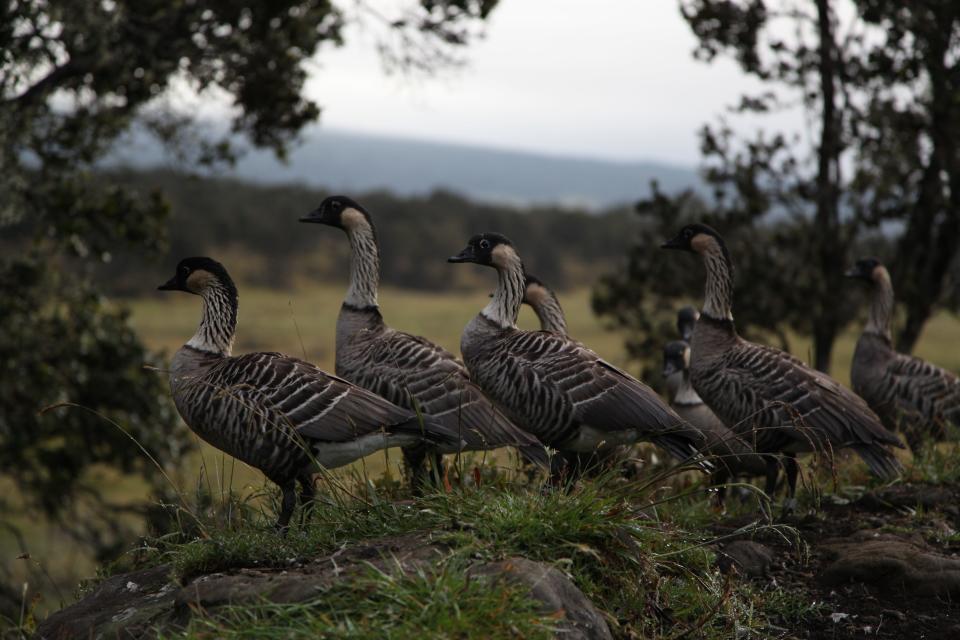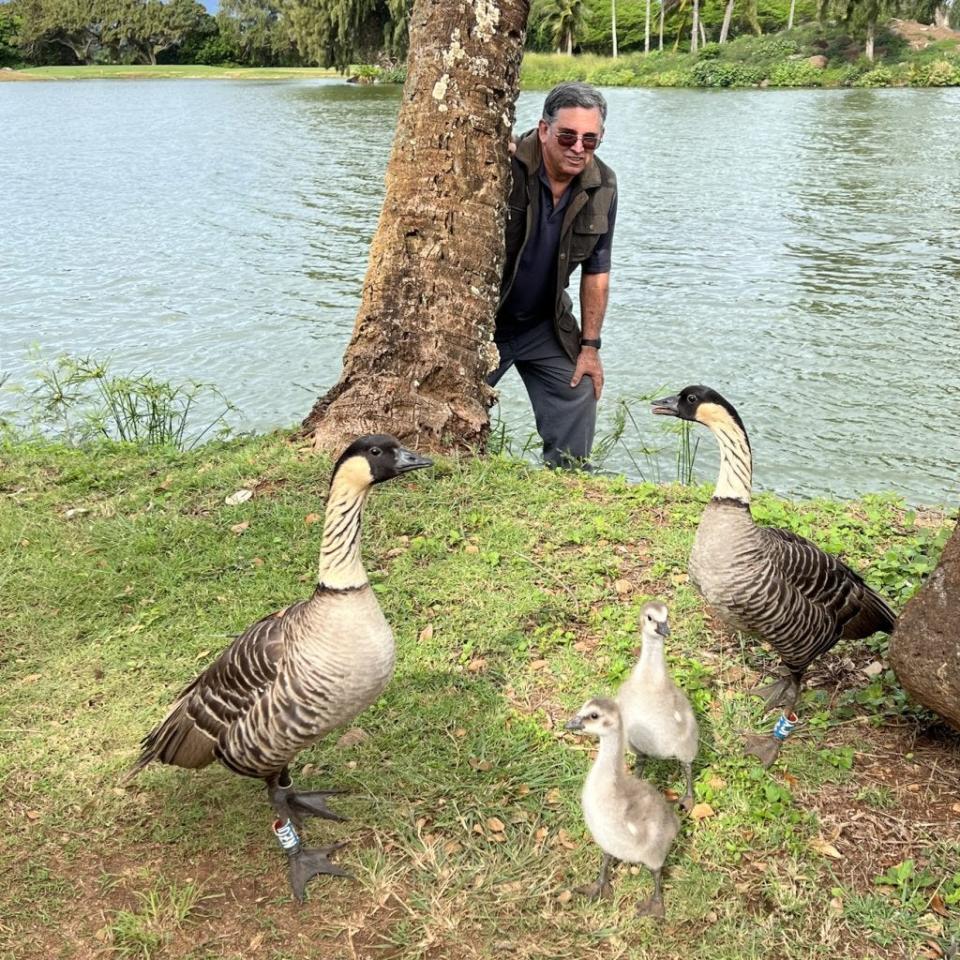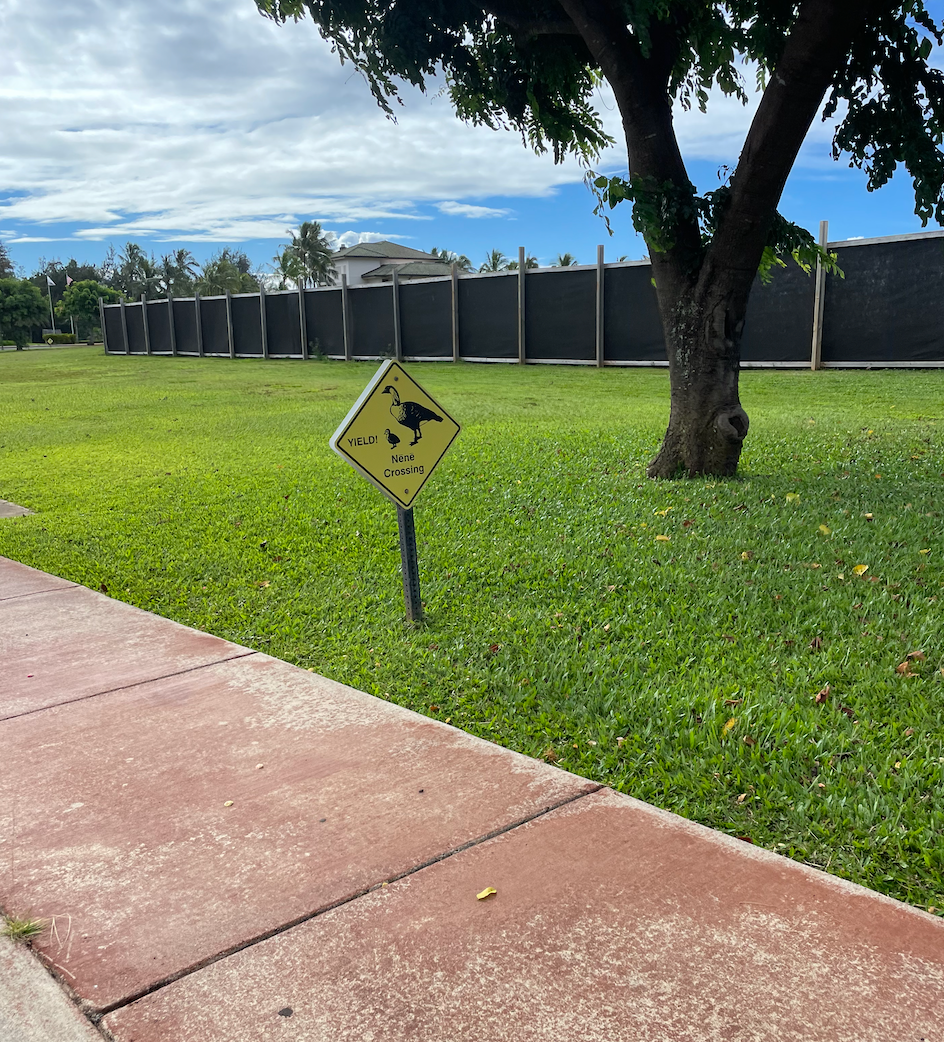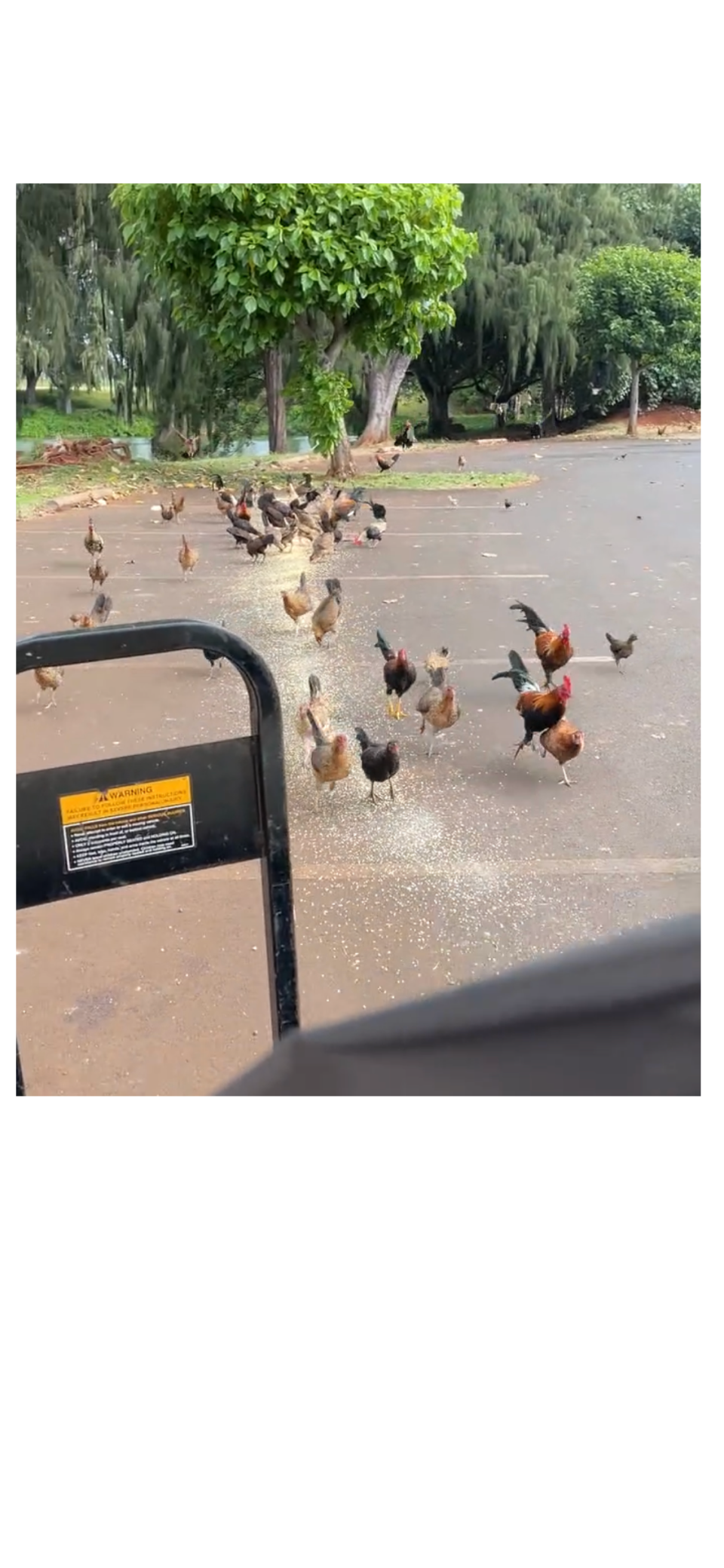Visiting Hawaii isn’t just about the beach: Why this biologist wants you to look up
KAUAI, Hawaii − When you come to Hawaii, you’re probably ready to enjoy the islands’ stunning natural beauty in front of you.
Alan Silva urges you to look up. You’ll get to see some of Hawaii’s endangered birds that can’t be found anywhere else.
Most travelers may take birds flying past for granted, but 95 of the 142 endemic bird species that were only found in Hawaii are completely gone. Those that are left mostly endangered – or haven’t been seen in decades and are most likely extinct.
Born and raised on the Garden Isle (Kauai), Silva is the on-site naturalist for the award-winning oceanfront resort Timbers Kauai at Hokuala.
The resort is unique in sharing its 450 acres of lush tropical foliage with over 50 different bird species, including five endangered species, like the state bird, the nēnē. The dark brown-colored birds are the last of five endemic geese in Hawaii and continue to be found only in the islands.

As a remote archipelago, Hawaii’s ecosystems are especially vulnerable to invasive species and habitat loss, which is what happened with the nēnē population.
At Timbers, guests are welcome to see some of these special birds up close in an opportunity only available in Hawaii: Silva’s Bird & Wildlife Tour.
With Silva as their guide, four times a week guests go around the property to learn more about Hawaii’s fragile ecosystem through the lens of birds.
“It’s more than a bird tour; I try to get kids into nature,” he said.
More: Sustainable Hawaii tourism: What it's like to stay at Kauai's first zero-waste hotel
How did Silva become a naturalist?

Locals call Silva the grandfather of conservation on Kauai, but he never expected to spend the majority of his life working with endangered species.
After high school, Silva worked in masonry and construction but ended up getting a job with the state as a wildlife technician because of the higher pay. Then he climbed the ranks to wildlife biologist for the state. “My choice to work with and foster the growth of indigenous species on Kauai was driven by my passion for the conservation and sustainability of our island,” he said.
About 50 years ago, when nēnē were on the brink of extinction, Silva was one of the people who helped revive their population on Kauai. Through conservation efforts like monitoring nesting seasons and removing predators like cats, the nēnē population grew from 12 or so to almost 800 – the largest wild flock in the world, he said.

“After retiring from the state, my work with endangered species was far from over,” he said. “The opportunity to continue my work in a setting that embraces and prioritizes these values was an easy decision.”
Silva retired five years ago from the state after 35 years of experience. As soon as he retired, he realized he couldn’t sit still and Timbers welcomed him full-time. “I already had the job,” he said, referring to how he knows the property like the back of his hand.
Silva grew up watching the resort change over time and even worked on the Timbers with the original owner in the 80s as a consultant. When Timbers took over, he oversaw their construction too.
What is it like protecting endangered species in Hawaii?
Protecting endangered birds on an operating resort property continues to be a tricky balancing act, according to Silva. Nesting nēnē can get attacked by feral pigs or continue to get hurt by planes taking off at nearby Lihue Airport. Timbers is also home to a golf course, which the birds like to frequent, but golf balls can end up hitting them. He also makes sure new construction work doesn’t interfere with any of the birds’ habitats or their nests.
Still, Silva loves his job. “I love being outside,” Silva said. “I can’t be cooped up in an office, I gotta be outside. Rain or shine, it doesn’t matter.”
Silva arrives at the property early in the morning and is one half of a two-person team. If he’s not doing a tour with guests, he’s checking his traps and monitoring the property for endangered birds, including keeping track of bird numbers and nests. He aims to create a safe haven for the birds.
If there’s an injured animal, Silva will take it to the state or the Humane Society. Sometimes he’ll work nights if there’s a feral pig that needs to be captured.
“I love that my job has a profound impact on our island and for our (guests) that will live on for generations to come,” Silva said.
‘It’s more than a bird tour’

Silva’s bird tour started spontaneously when guests asked him to show them some of the wildlife on property. In January 2022, it became an official hotel offering.
During my one-and-a-half-hour tour with Silva, we rode around the property in a golf cart, heeding speed signs telling us to go no faster than 14 mph (for the safety of the birds). He could easily point out which birds commonly nest where and when you can find them.
We spotted two of the five endangered Hawaiian birds found on the property: the Hawaiian coot and the Hawaiian duck. We also saw a flock of nēnē from a distance, but they took off when we approached them. In May, you might see almost 200 nēnē because it’s their nesting season.
We caught sight of more common birds, too, like nutmeg manikins bouncing around in the grass. I would have never noticed these tiny birds, which only grow to about four inches, without Silva identifying them.
Silva said he loves taking families on the tour, which includes feeding the chickens on the property and playing in the banyan trees.
In total, we saw 19 bird species, many of which I’ve seen before in Hawaii, but never stopped to appreciate them.
At the end of the day, Silva hopes the tour sparks something in people to protect Hawaii’s creatures.
“We all got to do our part,” he said. “Not everybody has a chance to work in conservation like I do, but we can all do something that will help protect them, like donate to someplace or physically volunteer. There's always something that you can do.”
Kathleen Wong is a travel reporter for USA TODAY based in Hawaii. You can reach her at kwong@usatoday.com.
This article originally appeared on USA TODAY: Visit this Kauai resort and see rare birds found nowhere else

